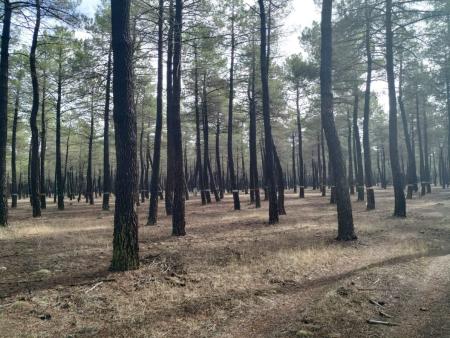
Objective:
The pine forests on the sandy plains of inner Spain represent a singular habitat and ecosystem in very poor site conditions. In addition to economic revenue from sustainable biological resources, resin tapping provides other ecological and social benefits from these forests. The present study, resulting from the SUDOE project SustForest, analyses the inclusion of these factors in the assessment of resin resources.
Context:
Resin tapping was an important source of employment and income for many years in the rural environment of Castilla y León. In the 1990s, this activity was abandoned for different reasons, including the emergence of similar products on the market (Pinus massoniana resin) from China, with the consequent drop in prices of the national product. The decline of this sector led to the abandonment of traditional forestry activities and the loss of associated ecosystem services, as well as the abandonment of the rural environment. These ecosystem services have not traditionally been valued in monetary terms because they lack a market, although they are known to report a series of values appreciated by society. An assessment of different ecosystem services associated with resin tapping is given below.
Contacts:
Mario Soliño, solino.mario@gmail.com
María Pasalodos, pasalodos.maria@inia.es
Sven Mutke, mutke@inia.es
Further information:
Soliño, M., Yu, T., Alía, R., Auñón, F., Bravo-Oviedo, A., Chambel, M. R., ... & Montero, G. (2018). Resin-tapped pine forests in Spain: Ecological diversity and economic valuation. Science of the Total Environment, 625, 1146-1155.